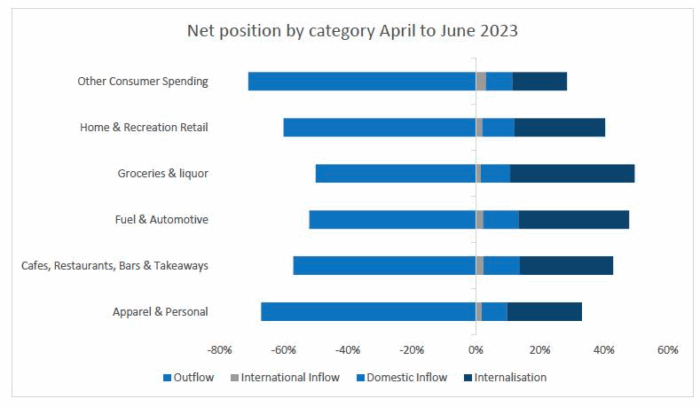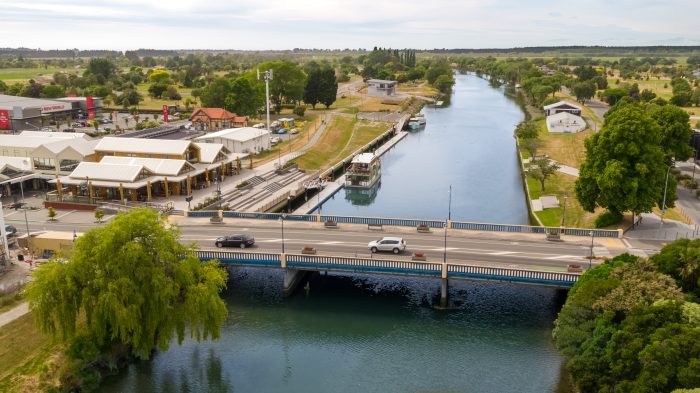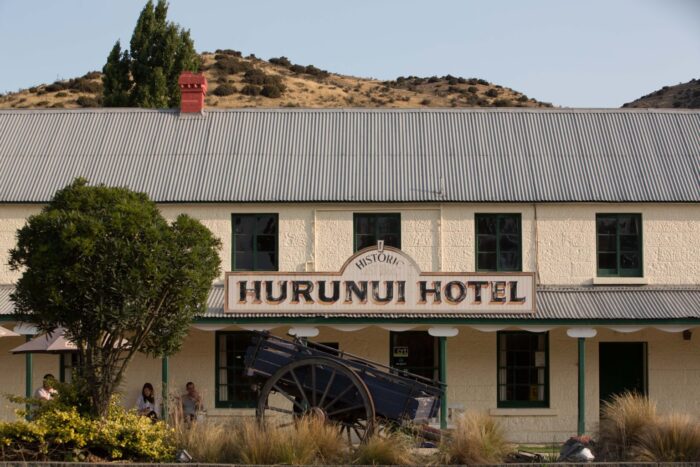Data helps you make good decisions, understand the wider picture of your industry, validate your plans and make sure that your assumptions are accurate. On this page you will find a collection of data sources that the ENC team deem valuable for those looking to start or grow a business. Some are easier to navigate than others and some are temporary, but all will give you a valuable insight into the location, topic or industry you are researching.
If you need data for your business or business idea and have difficulty finding what you need, please email miles@enterprisenc.co.nz.
Useful Data Sources
The North Canterbury Business Opinion Survey is undertaken every six months (April and October) and gives an indication of the mood of our business community. This survey is broadly in line with the NZIER New Zealand Business Opinion Survey which allows us to make comparisons between North Canterbury and New Zealand.
The Latest Survey
The latest survey took place in October 2024 and shows a sudden increase in business confidence reported by businesses in Waimakariri and Hurunui. The largest increase was about the New Zealand business situation for which confidence increased by 50%. This makes it the most positive our business owners have been since October 2013. Confidence also increased for the individual businesses, their industries and their districts.
This is not reflected in business profitability which continues to decline. Our businesses have been reporting a net decline since April 2020 when covid hit our communities, and we have not seen an increase in overall profitability yet. The main influence in this is the cost of doing business which continues to rise for almost all our businesses. Businesses have had to raise their prices in response, but those we talk to say that they cannot raise their prices enough to mitigate the cost of doing business without losing sales. As such, the decreasing inflation numbers are likely to be a major factor in businesses feeling that 2025 will be a better year.
Finding staff is now a lot easier than it has been in the past with businesses reporting a smoother time in recruiting skilled, semi-skilled and unskilled staff.
Investment intentions remain subdued, particularly investment intentions for buildings.
Overall, the underlying numbers for North Canterbury businesses remain concerning, but growing optimism is a good indicator of better times ahead.
Commissioned by the Waimakariri District Council, Infometrics provides us with quarterly reports detailing what the economic situation in the Waimakariri is. These reports provide many details on employment, building consents, gross domestic product, accommodation, house sales and prices, and retail and vehicle sales.
The latest Infometrics report for the month ended December 2024 for Waimakariri has been released.
As was reflected in our business opinion survey from October, there are signs that the local economy is starting to look up but that conditions are still tough for many of our businesses. A real positive for our semi-rural community is that dairy and meat prices are projected to perform much better. Dairy payouts look to increase to $312m, up $73m from the previous season. Sheep meat and beef prices have also seen increases.
Positive indicators:
- The number of businesses increased by 1.4% (in line with national results).
- Consumer spending up 2.4% compared to +0.2% nationally.
- Tourism expenditure up 10.7% compared to +3.7% nationally.
- Guest nights up 6.3% compared to +0.8% nationally.
- Employment is up 1% compared to no change nationally.
Negative indicators:
- GDP down 0.7% (in line with national results).
- Commercial consents down 27.1% compared to -0.9% nationally.
- Commercial vehicle registrations down 2% compared with +4.4% nationally.
- Jobseeker Support recipients are up 18.5% compared to +12.6% nationally.
The Waimakariri District of North Canterbury covers some 225,000 hectares, bordered by the Waimakariri River in the south, the Puketearaki Range in the west, Pegasus Bay in the east and the Hurunui District boundary to the north.
The major urban towns of the Waimakariri District are Rangiora and Kaiapoi, with Oxford, Woodend and Pegasus adding to the district’s population and services.
Here you’ll find a brief overview of key data, demographics and statistics relating to living and doing business in North Canterbury. If you require more recent figures or additional information, please contact ENC’s Business Support Manager Miles Dalton.
There were 7,212 businesses in the Waimakariri District in 2023, an increase of 1.8% on the previous year. These businesses employed 17,900 people (An increase of 1.7%). Approximately 71% of those businesses have no employees and 6% of businesses have 10 or more staff. 66.5% of the working population choose to work within the district.
Data Sources: NZStat, Waimakariri Business Development Report
The following chart shows the consumer market for the following industries in Waimakariri. The grey bars show where Waimakariri residents spend their money out of the district (usually Christchurch). The blue bars show where residents spend their money locally and the green bars show where non-locals spend their money.

While the unemployment rate in the Waimakariri District is traditionally at low levels (2.8% in March 2024 compared to 4.0% for New Zealand) it is usually relatively easy to find low and mid skilled workers. That is because 32% of Waimakariri workers commute to Christchurch for work. In the most recent Waimakariri Community Survey, 72% stated in that they would prefer to work in the Waimakariri if suitable work were available.
Word of mouth and social media tend to be the most common ways to promote jobs in this district. Traditional job sites can be less successful since many local workers are not actively seeking a new job (being already employed), even though they would prefer to work locally.
Finding highly skilled workers is traditionally more difficult in Waimakariri due to a smaller pool of talent (due to population numbers) than in cities, and due to the fact that local workers are generally not actively looking for local positions. Highly skilled Christchurch residents are generally happy to take the short commute to a good job in Waimakariri.
The Jobs in North Canterbury website run by ENC is a popular resource for employers looking for local workers listing the local agencies and assistance that can help you source workers
Data Sources: Infometrics, Waimakariri Community Survey, North Canterbury Business Opinion Survey
Consumer spend has steadily grown in Waimakariri with an annual increase to March 2024 of 6.2% compared to 2.8% nationally. The total consumer spend in the district is $807m.
Tourism is a very small part of the Waimakariri landscape, but has great potential for investment. In the year to March 2024 the electronic spend for domestic tourism in Waimakariri District grew 7.7% to $44.6m. Electronic spend for international tourism dropped 12.1% to $2.9m.
Christchurch NZ provides a report looking at the wider tourism picture for Canterbury.
Visit Waimakariri is the visitor attraction agency for the district
Data Sources: MBIE Reliance on Tourism webtool
Waimakariri is a fast-growing area, with a population of 66,246 in 27,456 households (Census 2023). Waimakariri is just north of Christchurch, the largest city in the South Island of New Zealand and easy commuting distance. Waimakariri has seen a 11% increase in population since the last census in 2018 and 45% GDP growth over the same period (-0.9% GDP growth over the year to March 2024). Mid level projections estimate that Waimakariri will have a population of 77,100 by 2033.
Within Waimakariri, the most rapid growth area is in Rangiora with many new options now ready for purchase or lease but there are still many opportunities in the Woodend/Pegasus area and a large number of sections and commercial areas available. 65% of the Waimakariri population is within the urban areas.
In 2023 the median age in Waimakariri District was 44.7 years. The district’s population is ageing, with the median age having increased from 43.6 at the 2018 census, and from 42.9 in 2013.
Data Sources: NZ Stat, MBIE Modelled Territorial Authority GDP, Census 2023

Aerial imagery from drone in Kaiapoi December 2019
Waimakariri is a comparatively affordable place to live with the March 2024 mean house value at $703,071 compared to $741,198 in Christchurch, $905,616 for New Zealand or $819,377 for the Selwyn District.
67.4% of households in Waimakariri District own their own home. This is slightly above the average rate for New Zealand, at 64.5%
House prices continue to rise in Waimakariri. House prices to March 2024 in Waimakariri rose 2.0%, Christchurch rose by 4.4% and Selwyn rose by 2.7%. New Zealand house prices overall increased by 1.9%.
The average weekly rent for the Waimakariri District in March 2024 was $532, slightly under the national average of $560. Rent levels in Waimakariri rose 4.1% over this period
Sizable new housing areas have been established in Rangiora, Kaiapoi and Woodend to keep up with demand.
Mean incomes for households in Canterbury were $122,000 in 2023 which was lower than New Zealand overall ($132,800) and a rise of 10.3% compared to the previous year.
Data sources: Infometrics, NZ Stat, MBIE.
The Hurunui District of North Canterbury comprises approximately 866,000ha between the South Island’s east coast and the Main Divide. Positioned north of the Waimakariri District, the Hurunui District boundaries reach from Leithfield Beach in the south to the Conway River (near Kaikoura) in the north.
There were 2,622 businesses in the Hurunui District in 2023. 68% of those businesses are very small, with zero employees; the remaining 32% of businesses collectively employ 4,950 employees.
The largest business sectors in the Hurunui District are:
| Industry (as of 2022) | Numbers of people employed* | GDP for Hurunui | Median annual earnings for individuals |
| Agriculture | 1650 | $240m | $46,750 |
| Manufacturing | 320 | $74m | $48,000 |
| Electricity, Water and Waste | 100 | $62.5m | $77,990 |
*Number of people employed does not include business owners
A large part of the Hurunui economy is made up of tourism. Tourism covers a range of industries including retail, hospitality, accommodation and transportation. In the year ending May 2024, there were 709 tourism related jobs and visitor spend accounted for $94.9m.
Unemployment in Hurunui is traditionally at very low levels (2.1% in March 2024 compared to 4.0% for New Zealand). This can make it difficult to find staff that live locally. However, with major housing developments planned and proximity to the Waimakariri District it is possible to find suitable semi-skilled and unskilled workers.
It can be difficult to find non-agricultural highly skilled workers and any technical business looking to establish in Hurunui would need to consider how they would attract the employees they need to the area. Hurunui does offer an extremely attractive lifestyle and affordable housing.

Hurunui is a district with a slowly increasing population of 13,608. It has seen a population growth of 8% since the last census in 2018. Mid level projections estimate that Hurunui will have a population of 14,150 by 2028.
Current Situation: In the year to May 2024 tourism electronic transactions were $94.9m in the Hurunui District. Domestic visitors to the Hurunui District spent $90.2m (a decrease of 5%) and international tourists spent $4.7m (a decrease of 23%).
The major urban settlements of the Hurunui District are Amberley, Cheviot and Hanmer Springs. Culverden and the Waipara Valley wine region are among the many smaller populated areas in the district.
Find out more about our towns- Waimakariri Long Term Plan 2024-2034
- Waimakariri Community Survey 2019
- Waimakariri District Council - Taking Care of Business
- ENC's Guide to Economic Development in North Canterbury 2019
- Where Business Belongs - Waimakariri Promotional Brochure 2012
- Waimakariri Research & Monitoring Report
- Hurunui Annual Plan
- Hurunui Long Term Plan 2024-20034
- Hurunui District Council Annual Reports


